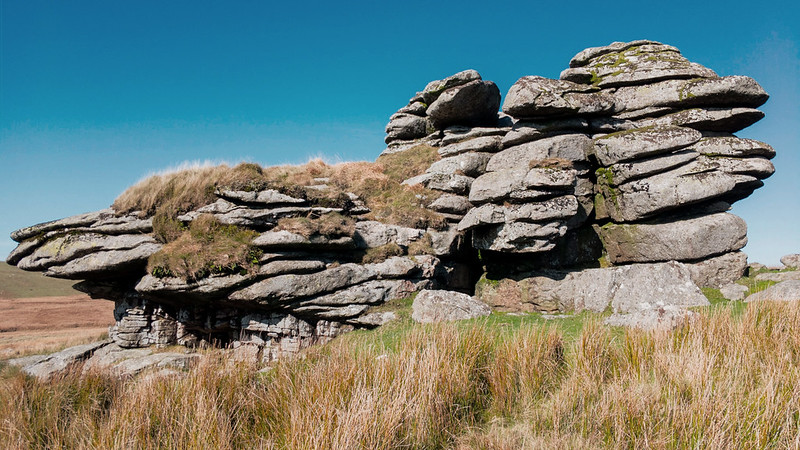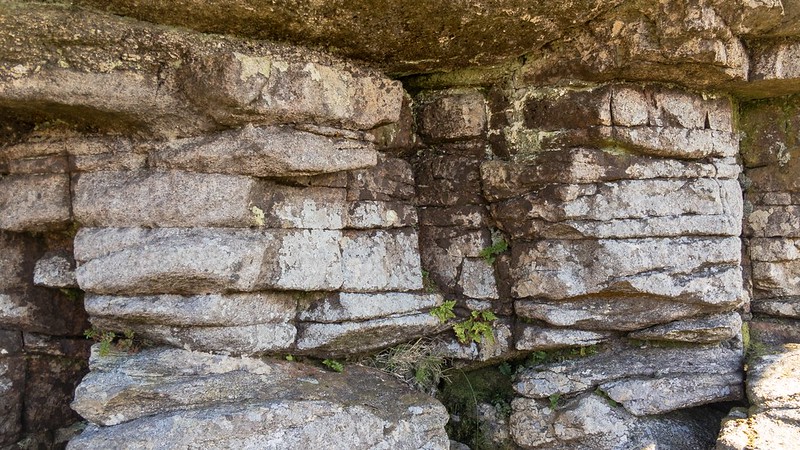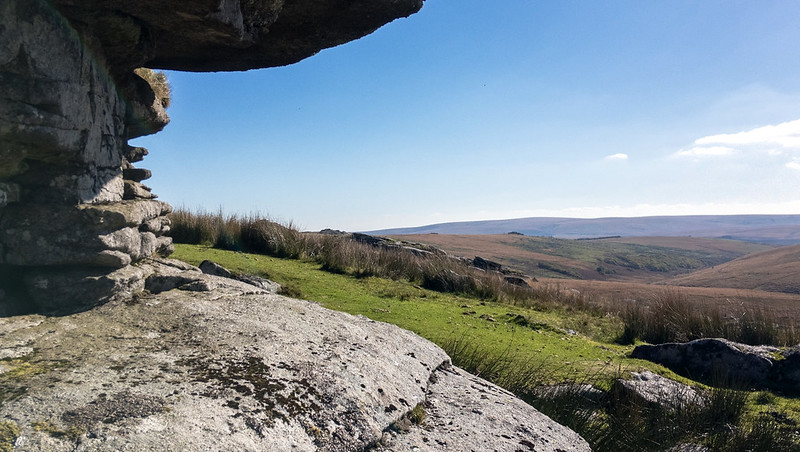TORS OF DARTMOOR
a database of both lesser- & well-known rocks and outcrops
Crow TorCrowtorre, Crewtor, Crewtorre, Crowter, Croughtor, Croughter
 Positioned high above the confluence of the Methern Brook (or Foxholes Water) with the West Dart River is a quite magnificent tor. This is Crow Tor but Hemery (1983) reminds us that in Dartmoor speech it is pronounced as 'C-row Tor', stressing the 'ow' syllable as is the same case with nearby Rough, or Row Tor. The author also supplies the alternative name of 'Croughter'. The tor is widely visible from the valley of the West Dart as the rambler walks northward from Two Bridges; from Wistman's Wood it stands sentinel above the valley and its massive clitter is indicative of its former size, the tor's substance now confined to one single cohesive stack barring its neighbouring broken twin outcrops called Little Crow Tor to the south-east. To some, Crow Tor takes on the rough outline of a bird which may account for its name, although Hemery disputes this.  Kenneth Day (1981) includes a passage about Philip Ouldsbroom when he discovered Brown's House and subsequently Crow Tor. Ouldsbroom, a fictional character first introduced in Eden Phillpotts' novel 'The Thief of Virtue' (1910), was a 40-year-old bachelor who lived at Hartland (Hartyland) Farm near Postbridge and was looking for a relationship, which he discovered, but after his wife's death, he began exploring the wilds of the moor alone. The extract is thus: "On a bog-foundered slope above the gorges of Dart in mid-Moor stands Crow Tor, and seen afar from beneath Wistman's Wood, ascends as a prominent landmark among the hills. In form, at this remote range, it suggests some mighty saurian or humpbacked snail, creeping aloft from its lair in the marshes; while observed at hand, the tor presents an irregular, huge mass of granite piled forty feet above the earth, cleft, torn, and weathered from base to crown."  Crow Tor's distinctive shape is largely thanks to its unique, marked geology as in the lower portion of the outcrop, under the overhang, you will notice a change in composition. Collingwood (2017) explains that "This is a fine grained aplite or microgranite" intrusion that has resulted in the severely fractured appearance of the tor on this side. From here the views are spectacular, particularly to the south where the West Dart is forced into a long, straight valley that is bounded on both sides by tors of great magnitude, including the conical Longaford Tor to the left and the impressive Beardown range to the right, whilst the oaks of Wistman's are seen clinging onto the river's left bank where minimal shelter from the elements may be sought during times of savage weather. Distant is the range of the southern hills that flank the Swincombe basin.  The tor was once well-known for housing one of the moor's earliest letterboxes, as illustrated in Dartmoor 365, however, sadly, it has since been removed for reasons unknown. Sandles (2016) explains its significance: "Crow Tor was introduced to the world of letterboxing by having the third established box sited in 1962 and included a fine hardbound visitors book which is now lodged along with later ones in Plymouth library." To the south-west there is a fine example of a prehistoric grave, a kistvaen (or cist) with its coverstone resting on a slant. The concentration of broken granite that is littered all across the hillside has been of excellent use to construct newtake walls to the south and east which are a north-eastward continuation of the Beardown Newtake that was created for Mr Edward Bray who, in c1802, moved into Beardown Farm and wanted his land clearly defined on the ground. You can read more about Mr E. Bray here.
| ||||||||||||||||||||||||||||